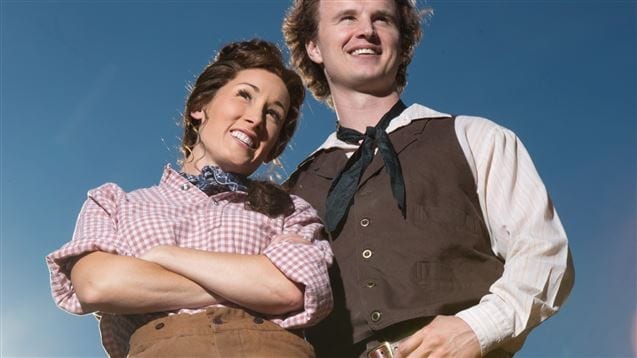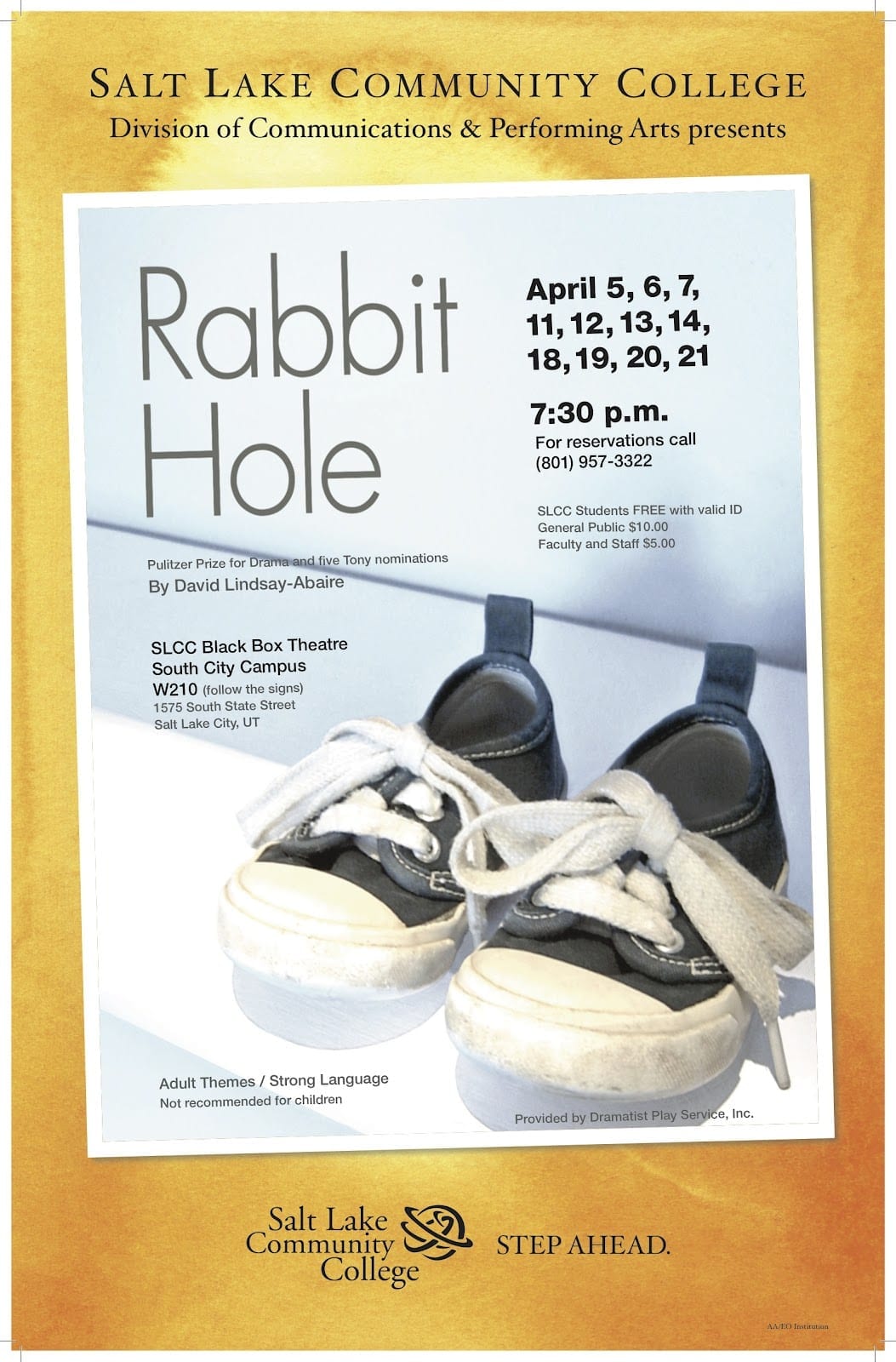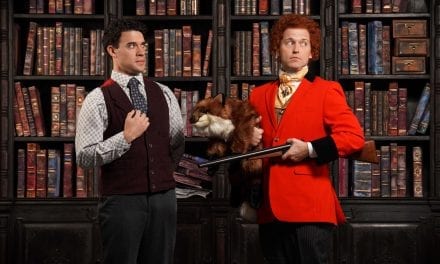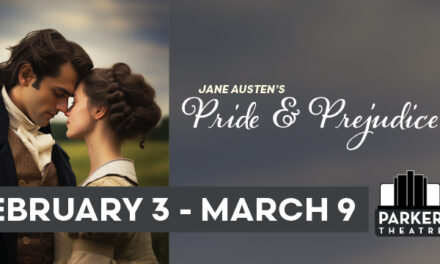WEST VALLEY CITY — Producing a classic play can be a challenge for theatre artists. An inherent tension exists between the creative impulse to do something new and audience members’ expectations of a classic shown done the “right way.” The creative team of Hale Centre Theatre’s production of Oklahoma! chose to introduce new elements to the show. But in the end, I wish they had stuck to a more traditional vision.
As Curly Maclain, Derek Smith brings more than enough vocal talent and ability to Rodgers and Hammerstein‘s classic songs. His rich, clear voice makes songs like “People Will Say We’re In Love” and “The Surrey With the Fringe on Top” a simple pleasure. Smith extends this simplicity to his acting as he shows Curly’s honest, undisguised love for Laurey, especially in the way he playfully argues with her.
Unfortunately, Elise Groves was not as appealing as the young Laurey. Groves made Laurey far too flirty (such as before “People Will Say We’re in Love” and in their first scene), which was at odds with the coyness of the character’s words towards Curley. This character choice makes her decision to attend the box social with Jud hard to understand. Additionally, Groves didn’t infuse Laurey with any innocence or naivety—essential character traits for her. Without them some of Laurey’s actions (like buying the smelling salts or trying to make Curley jealous) are inexplicable.
Jacob Theo Squire played the show’s antagonist, Jud Fry. Unfortunately, nearly every one of Squire’s scenes lacked tension between Jud and the other characters. Squire was never able to show why Laurey would be afraid of Jud or why he was the town outcast. Part of this is because the costume designer (Tamara Baker) and hair and makeup designer (Krissa Lent) made Squire too clean-cut. Instead of a loathsome, physically and emotionally dirty man, Jud appeared to be a mild misfit. This mismatch between what characters said about Jud and what I saw on stage was so disjointed that in the auction scene when he bids all of his money for a date with Laurey, his words seemed to be more of a sweet plea than a sinister effort to be alone with her.
Another problematic performance came from LizAnne Chapman, who played Aunt Eller. Chapman is far too young for the role, and I never believed that she was an old woman. Chapman gave her best effort to the part, and I appreciated her camaraderie with Groves in their many scenes together. A better casting decision was to have Heather McDonald play Ado Annie. McDonald’s energy and stage presence were so compelling that she made me overlook the fact that Ado Annie is really a huge floozy with loose morals.
Director David Tinney aimed to reinvent a classic play, and that is a directorial urge that I am normally sympathetic to. But the results in this show are mixed. The backstory between Curly and Laurey (in the dream ballet) was charming and innovative, as was the decision to make Laurey hear Curley—and then hide from him—as he enters the stage for the first time. Yet, many of Tinney’s other directorial decisions were not as successful. Having Curley read from a note after he proposed to Laurey, for example, confused me because the proposal seemed spontaneous, yet Curley also had prepared remarks. A similar mismatch between words and on-stage actions was apparent in “It’s a Scandal! It’s an Outrage!” when the ensemble was acting nonchalant and almost taunting Ali Hakim (Andrew Hansen) when Hammersetein’s lyrics were emotionally charged. Another directorial choice that was problematic was to have Curley acutally tie a noose while in Jud’s smokehouse. The quick and businesslike manner in which Curley did this implied that Curley arrived at the smokehouse with every intention of trying to get Jud to kill himself. It’s hard to love a character that would try to goad someone into suicide.
Tinney’s choreography for the production was generally more successful. Although not particularly athletic or advanced, the cast executed the steps with precision, and the dances in “Kansas City” and the dream ballet were enjoyable.
It is also important to note that the reinventions in this production extended to the music. The pre-recorded orchestrations (from The MT Pit L.L.C.) sometimes emphasized banjo or acoustic guitar accompaniment (such as in “All or Nothing” or “Surrey With the Fringe on Top”). I understand that choice was made to emphasize the frontier feel of the show, but it ignores the obvious fact that Rodgers and Hammerstein did not write a folk score. It also robbed some of their songs of their tunefulness (surely the greatest strength of a Rodgers and Hammerstein score) and clashed with the full orchestral accompaniment of other songs (like the dream ballet, “Oklahoma!” and “The Farmer and the Cowman”). Additionally, music director Anne Puzey‘s music direction was not at the level that Hale audiences expect. The ensemble’s diction in “The Farmer and the Cowman” was sloppy, and the decision to have Groves belt during “Many a New Day” was jarring when the ensemble joined in with a much more classical vocal style.
Yet, it is a testament to the brilliance of Rodgers and Hammerstein that Oklahoma! holds up, even with miscast performers, musical missteps, and creative risks that don’t pay off. This play is so well written and the score so strong that any reasonably competent director and cast can make the show work. And in the end, it does work. It’s not an ideal production of Oklahoma!, but the moments that work outnumber those that don’t.







